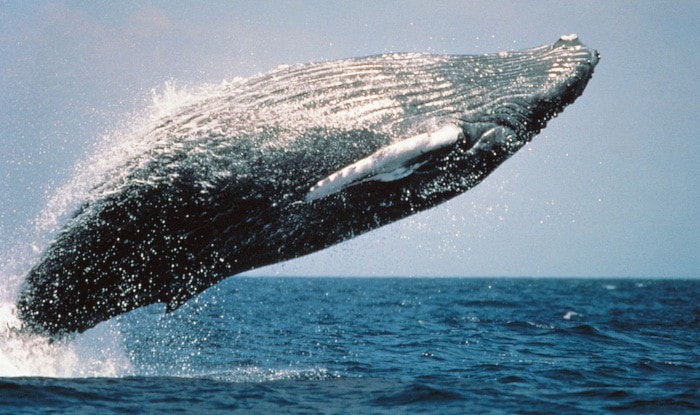Marine Harvest Canada says it will remove the support lines at its fish farms in the area after finding a dead humpback whale entangled in its anchoring equipment at an empty facility at Sheep Passage, north of Bella Bella.
The body of the whale was discovered Nov. 15 when staff and contractors were dismantling the site’s anchoring system after a previous entanglement in September.
The September entanglement resulted in the whale being successfully freed after Fisheries and Oceans Canada officers and members of the Kitasoo First Nations managed to cut away the ropes that were entangling the animal.
“Our staff are very saddened by what’s occurred, and quite shocked, because nothing like this has ever happened in the 30 years we’ve been operating, and now to have two interactions in a couple of months has us flabbergasted,” says Ian Roberts of Marine Harvest Canada.
Fisheries and Oceans Canada were notified of the incident and are investigating, and the entire Sheep Passage facility has now been dismantled.
“We’ve been operating in that area for 20 years and that site had been in the water for 10 years, and only in the last two months have we had any interaction,” Roberts says. What seems to have been “a contributing factor,” Roberts says, surrounds the design of the facility’s anchoring system.
“You’ve got your anchor in the mud and you’ve got a 2.5-inch line that goes up to the system. It’s like a guitar string, so it’s not going to entangle anything,” Roberts says. That anchor, however, can’t be moved around or reeled in without a support line, and it is this secondary line that “seems to have contributed [to these two entanglements],” Roberts says
Those support lines, Roberts says, are “not an integral part of the system,” so they are currently being removed from multiple sites. He says they will figure out a solution later to the problem of being able to move anchors around.
“The company is immediately contracting a submersible ROV (remotely operated vehicle) to remove those anchor support lines,” Roberts says. “We’ll do that immediately for the Klemtu sites, and then we’ll inspect the other sites that have similar designs for their anchoring systems, and then, if we have to, we’ll remove those lines, as well.”
But how does a whale get entangled in a single, taut line, anyway?
“That’s still what’s puzzling us,” Roberts says. “It’s puzzling how a whale can rub up against a single line that’s pretty tight and wrap itself, but it doesn’t even matter if we can figure that out, we’ll just remove the line and take away that risk altogether.”
Roberts says it’s never been more important to be proactive in assessing risk to wildlife, as there is data suggesting that the possibility of these types of interaction is increasing with an increase in whale populations.
“There’s good data out there about the increase in humpback whales,” Roberts says. “We have to be cognizant that if there’s an increase in the population, interactions might increase, and all marine user groups – whether you’re in aquaculture or whether you’re boaters – we have to make sure that we’re doing what we can to minimize any harm, so that’s what we’ll be doing.”
The Marine Education and Research Society, based in Alert Bay, says they documented seven humpback whales off the coast of Northern Vancouver Island in 2003. In 2011 they counted 71, which seems to back up Roberts’ assertion.
